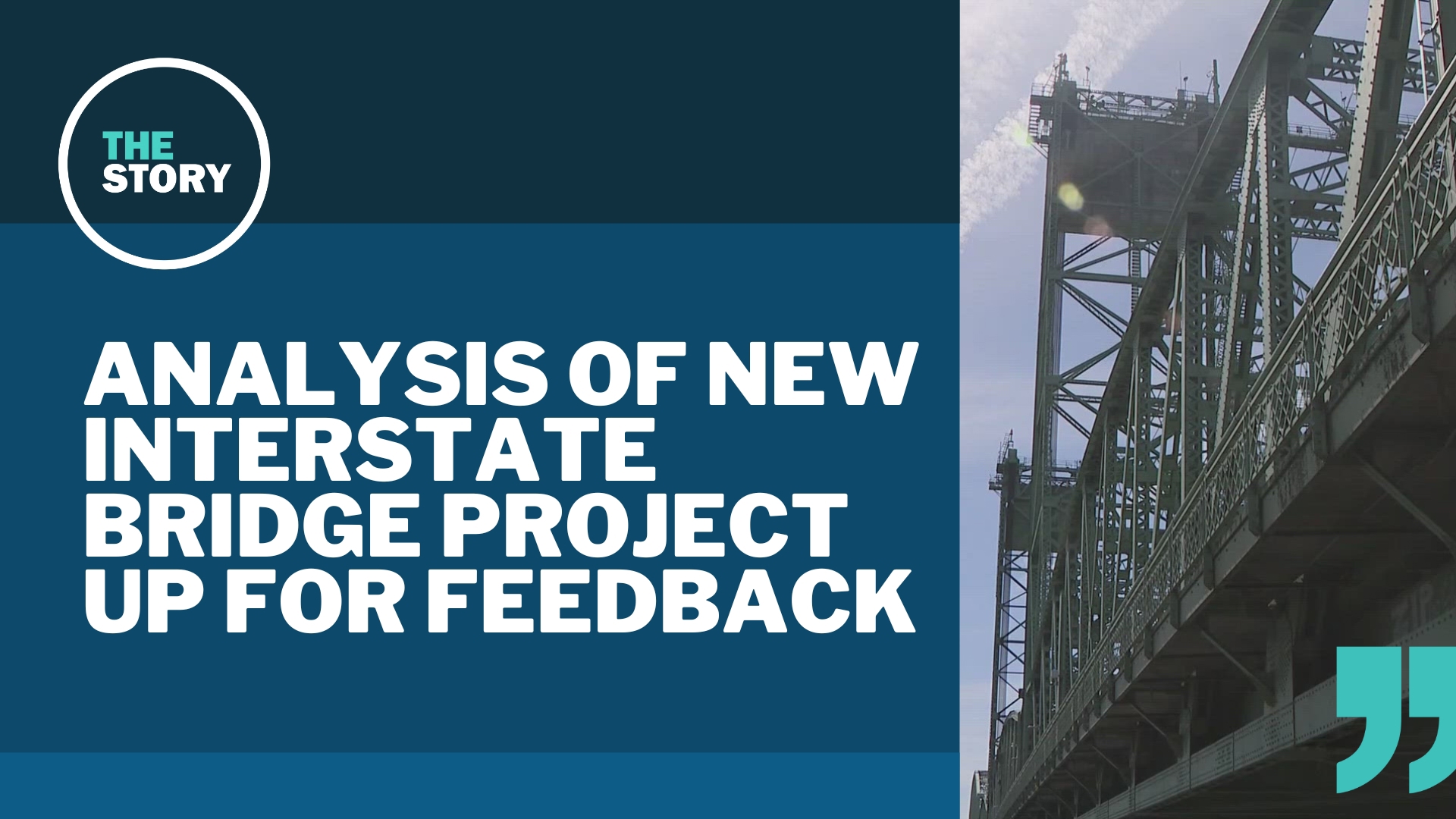VANCOUVER, Wash — After months of delay, the Interstate Bridge Replacement (IBR) project hit a milestone Friday with the release of its Draft Supplemental Environmental Impact Statement (SEIS), a key step in the federal environmental review process for the $6 billion megaproject.
The project team released its Locally Preferred Alternative in 2022, outlining a specific proposal for what it wants to build: twin replacement bridges with two more lanes and larger shoulders, plus a light rail extension to Vancouver, upgrades to several miles of Interstate 5 to the north and south of the river and a replacement for the North Portland Harbor Bridge.
The next step was to put that proposal through an exhaustive study that examines all of the benefits and impacts on everything from traffic and bike access to air quality and fish habitats. The resulting set of documents, published Friday morning, comes in at a bit more than 12,000 pages, including the associated technical reports.
The "supplemental" part of the name is because the current project is officially considered a continuation of the failed Columbia River Crossing, which fell apart in the planning stages in 2013. But the earlier project finished its Environmental Impact Statement and got a federal green light, so the current document is technically an update to the earlier one.
Some key questions remain unanswered in the SEIS — most notably the issue of whether the new bridge will include a drawbridge section — but the document is still the most comprehensive look at the project plan thus far.
The view from 2045
The SEIS is structured as a comparison between two scenarios, both projecting out to the year 2045 — one in which the project gets built as proposed, and one in which it does not and the current twin bridges are still in two decades from now.
The document paints a rosier picture for the new bridge scenario, with significantly fewer hours of congestion per day and faster trips for rush hour car commuters between Vancouver and Portland.
"We see about a four- to eight-minute reduction in the build scenario compared to the no-build in the southbound direction, and you see a bigger benefit in travel times in the northbound," IBR assistant program administrator Frank Green said at a news conference Friday morning.
Bus riders would see similar improvements, and light rail trips between Vancouver and Portland would be 47 minutes — about on par with an express bus if traffic is good, and a bit better if it's not.
"With the investments in light rail and express bus, the number of riders across the bridge will increase by 96%," Green said.
It's worth stressing that the improvements aren't a comparison to how things are today — they're a comparison to how things would be in 2045 if the current bridges were still in use. Overall traffic is expected to increase in either scenario.
Construction impacts
The SEIS also covers some of the more near-term impacts during construction, such as tolling on the bridge and displacement due to property acquisition.
In May, KGW obtained a partial early version of the draft SEIS through a public records request, which showed that the project was expected to displace a total of 43 residential units and 33 businesses. The total in the official document released Friday is revised to 43 residences and 36 businesses, collectively employing more than 600 people.
"The impacts to businesses and people is real to us as it is to them," IBR assistant program administrator Ray Mabey said Friday. "We are taking every step to avoid minimize those. This is one of those steps in documenting those impacts in the project that we're studying."
The document outlines the project's tolling plan using placeholder dates and amounts, because the final tolling rules will be set by a joint committee of Washington and Oregon transportation officials — but it consistently states that tolls will start on the current bridge while the new one is being built. The placeholder tolls range from $1.45 to $2.95, depending on the time of day, and the placeholder start date is April 1, 2026.
The team hopes to have begun early construction work by that point, kicking off what the SEIS describes as a 9- to 15-year construction period. The primary twin bridges are only expected to take 4 to 7 years to build, but other parts of the project will take longer or will need to be built in specific sequences rather than all at once.
Public feedback wanted
The release of the draft SEIS kicks off an official 60-day public comment period, and project leaders at Friday's news conference strongly encouraged residents throughout Portland and Southwest Washington to read through the documents and weigh in.
"If you like it, comment. If you hate it, comment. We want to hear from everyone," said IBR program administrator Greg Johnson.
The full draft SEIS is available on the project's website, along with an online comment form and instructions for leaving email and voicemail comments. The team also plans to host four virtual community briefings and two in-person public hearings next month. The full schedule is also listed on the project website.
The feedback will be evaluated and incorporated into the development of the final version of the Environmental Impact Statement, which is expected to be released next summer, Johnson said. Many of the unresolved questions about the bridge design will have been answered by then, he added, based in part on the public response to the draft SEIS.

